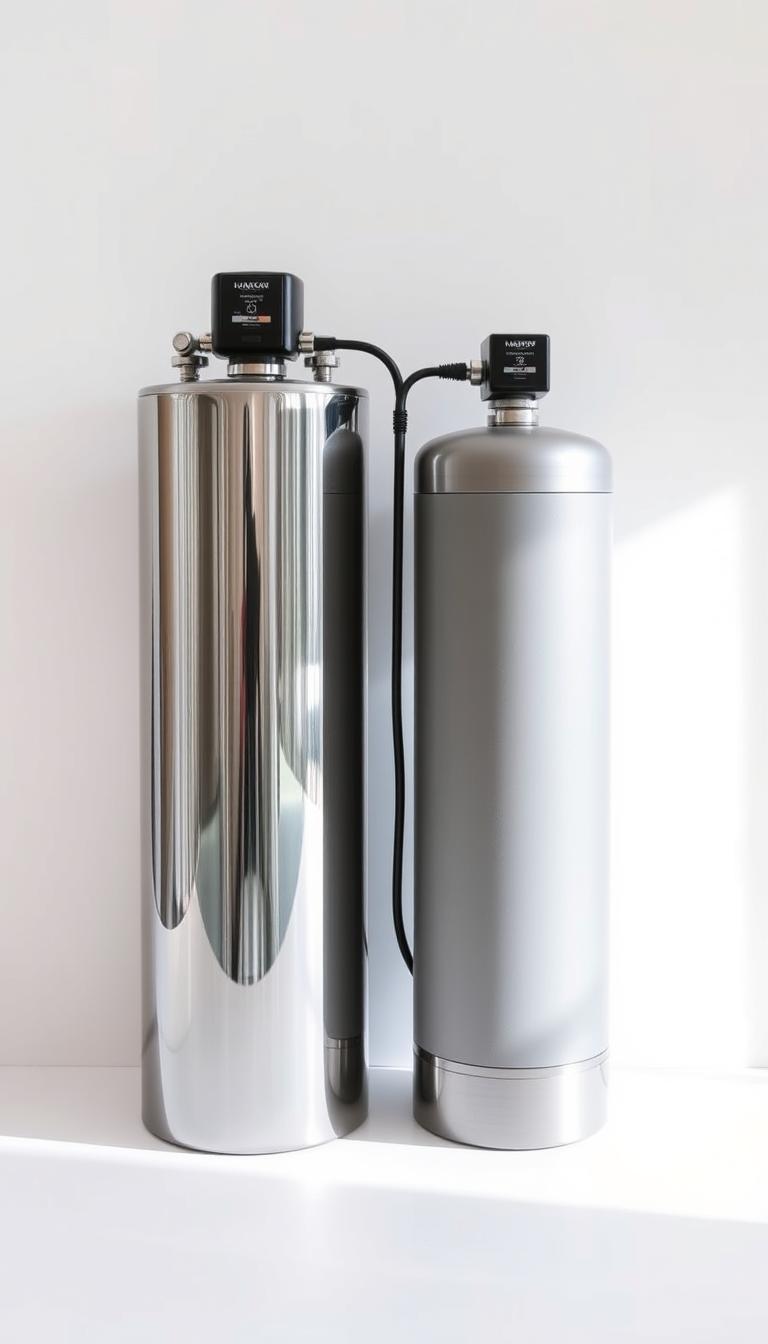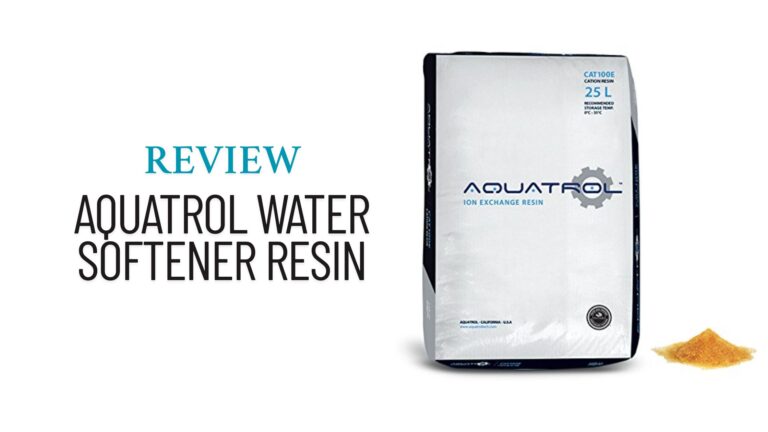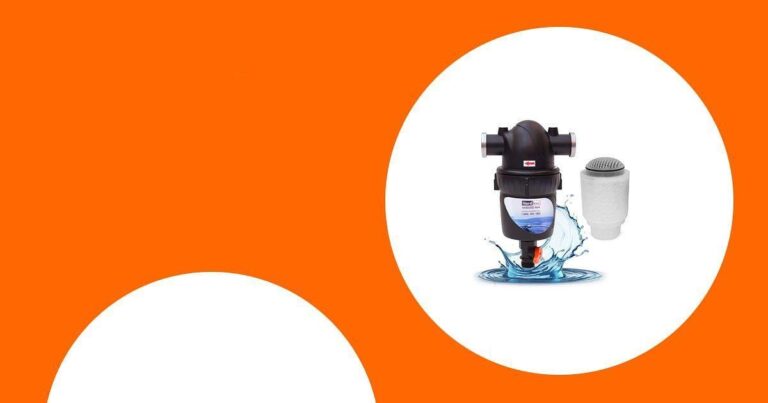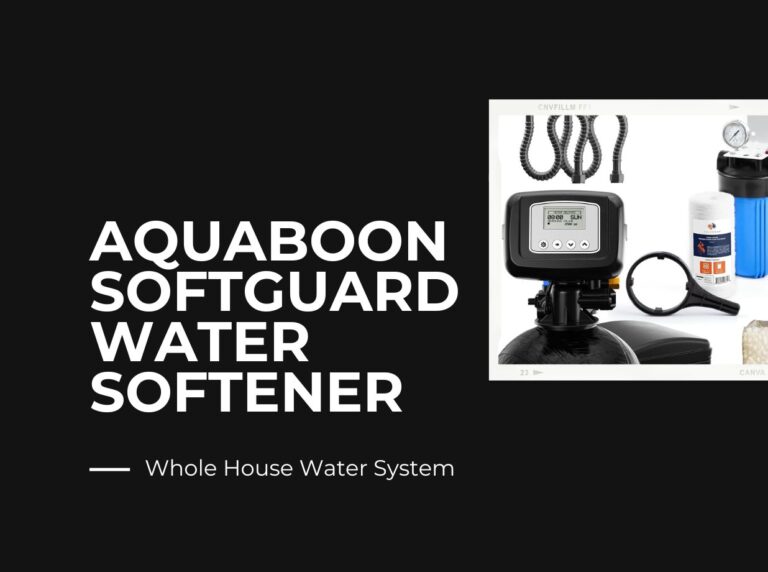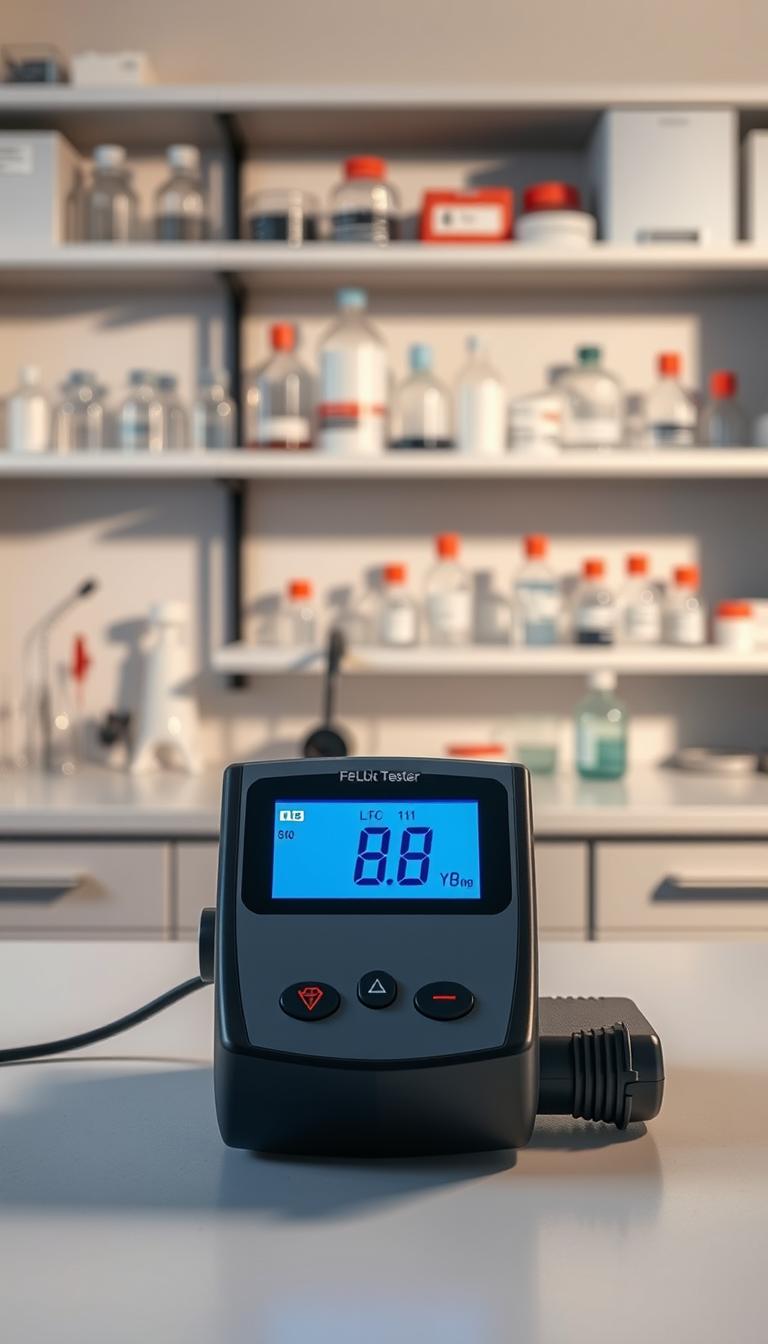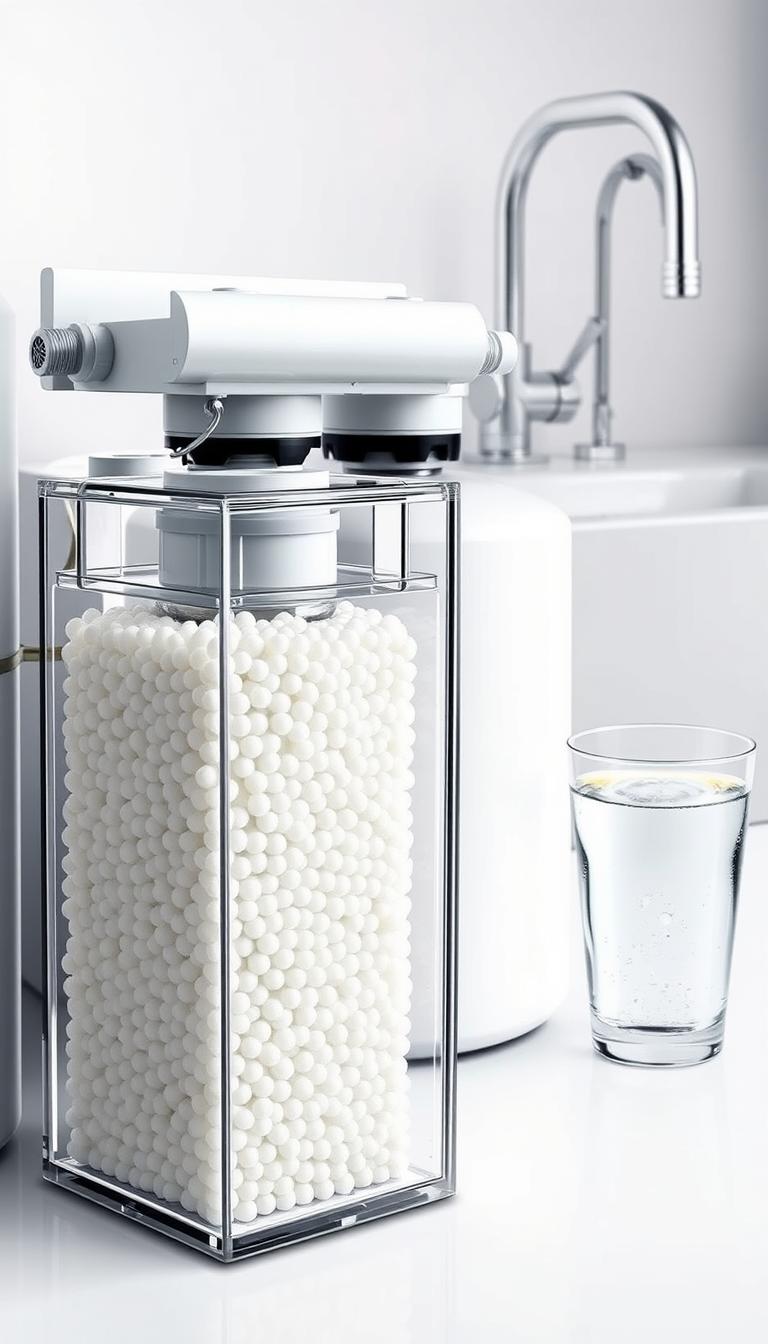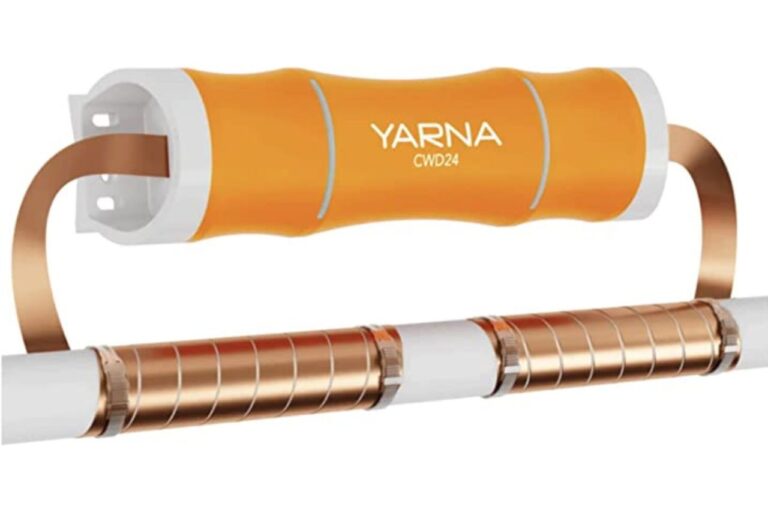5 Key Differences Between Water Softeners and Conditioners
Are you tired of dealing with the negative effects of hard water in your home? Hard water can lead to scale buildup, damage appliances, and affect your skin and hair. Many homeowners turn to either water softeners or conditioners to address these issues, but what’s the real difference between them?
Understanding the distinction is crucial for making an informed decision about your water treatment needs. Water softeners and conditioners are two distinct methods of treating hard water, each working in different ways to provide a solution.
While both systems aim to improve water quality, their approaches and benefits vary. In this article, we’ll explore the key differences between water softeners and conditioners, helping you choose the best option for your home.
Key Takeaways
- Understanding the difference between water softeners and conditioners is crucial for addressing hard water issues.
- Water softeners and conditioners work in distinct ways to treat hard water.
- The choice between a water softener and a conditioner depends on your specific water treatment needs.
- Both systems have their benefits and drawbacks.
- A comparison of water softeners and conditioners will help you make an informed decision.
Understanding Hard Water Problems in American Homes
Hard water is a pervasive issue in many American households, causing a range of problems that affect daily life and plumbing systems. The high levels of calcium and magnesium in hard water lead to scale buildup, reduced appliance efficiency, and skin/hair issues.
Common Signs of Hard Water
Identifying hard water problems early can help mitigate their impact. Common signs include:
- Soap scum and limescale buildup on fixtures and appliances
- Dry, itchy skin and dull hair
- Reduced water flow from faucets and showerheads
- Increased energy bills due to reduced appliance efficiency
Impact on Plumbing and Appliances
Hard water can significantly affect plumbing and appliances. Scale buildup can clog pipes, reducing water pressure and potentially causing leaks. Appliances such as water heaters, dishwashers, and coffee makers can also be affected, leading to increased maintenance and replacement costs.
Effects on Daily Life
The effects of hard water extend beyond plumbing and appliances, impacting daily life in various ways. Skin and hair issues are common, as soap doesn’t lather well in hard water, leading to dryness and irritation. Additionally, the aesthetic appeal of homes can be diminished by limescale stains and soap scum buildup.
| Issue | Effect of Hard Water | Potential Solution |
|---|---|---|
| Scale Buildup | Clogged pipes, reduced appliance efficiency | Water softener or conditioner installation |
| Skin and Hair Issues | Dryness, irritation, and dullness | Using moisturizing products, installing a water treatment system |
| Appliance Maintenance | Increased maintenance and replacement costs | Regular appliance maintenance, water quality improvement |
What Is a Water Softener?
Understanding water softeners begins with grasping their primary function: to soften hard water. Water softeners are designed to address the issues caused by hard water, which contains high levels of calcium and magnesium ions.
How Ion Exchange Technology Works
Water softeners utilize ion exchange technology to remove these hardness minerals. This process involves exchanging calcium and magnesium ions for sodium or potassium ions, effectively softening the water. The ion exchange process occurs within the softener’s resin tank, where resin beads attract and hold onto the calcium and magnesium ions, releasing sodium or potassium ions into the water.

Components of a Typical Water Softener System
A typical water softener system consists of several key components, including the resin tank, brine tank, control valve, and sometimes a sediment pre-filter. The resin tank is where the ion exchange process takes place, while the brine tank holds the salt or potassium used for regeneration.
The Regeneration Process Explained
Over time, the resin beads in the softener become saturated with calcium and magnesium ions and need to be regenerated. The regeneration process involves flushing the resin with a salty brine solution from the brine tank, which replenishes the sodium or potassium ions on the resin, allowing it to continue softening water effectively.
What Is a Water Conditioner?
The concept of water conditioners revolves around altering the properties of minerals in water without removing them. This approach provides an alternative to traditional water softening methods, appealing to homeowners seeking different solutions for hard water issues.
Water conditioners utilize various technologies to achieve their effects. One of the most notable methods is Template Assisted Crystallization (TAC). This technology involves using a medium that templates the crystallization of calcium and magnesium carbonates, turning them into harmless, stable crystals that don’t adhere to surfaces, thus preventing scale buildup.
Template Assisted Crystallization (TAC)
TAC is a popular method among water conditioners. It works by catalyzing the transformation of hardness minerals into a crystalline form that doesn’t stick to surfaces. This means that instead of removing minerals like calcium and magnesium, TAC conditioners change their behavior in the water, preventing them from causing scaling issues.
Electromagnetic and Magnetic Conditioners
Another category of water conditioners uses electromagnetic or magnetic fields to alter the properties of water. These systems are installed around the pipes and claim to change the way minerals in the water behave, reducing scaling. While their effectiveness can vary, they offer a chemical-free and salt-free alternative.
Carbon Filtration Systems
Some water conditioners also incorporate carbon filtration. While not directly related to hardness, these systems improve water quality by removing chlorine, taste, and odor issues, enhancing the overall usability of the water.

| Technology | Description | Key Benefits |
|---|---|---|
| Template Assisted Crystallization (TAC) | Crystallizes hardness minerals | Prevents scale buildup, no salt or chemicals |
| Electromagnetic/Magnetic | Uses fields to alter mineral behavior | Chemical-free, easy installation |
| Carbon Filtration | Removes chlorine, taste, and odor | Improves water taste and quality |
Water conditioners, with their diverse technologies, offer homeowners a range of options for managing hard water without the need for traditional softening methods. By understanding these alternatives, consumers can make more informed decisions about their water treatment needs.
5 Differences Between Water Softeners and Conditioners
While both water softeners and conditioners aim to mitigate the effects of hard water, they operate through different mechanisms and have various implications. “The choice between a water softener and a conditioner depends on several factors, including your water quality, household needs, and environmental concerns,” says a water treatment expert.
Difference #1: Treatment Method
The primary distinction lies in their treatment methods. Water softeners use ion exchange technology to remove calcium and magnesium ions, replacing them with sodium or potassium ions. In contrast, water conditioners employ various technologies, such as Template Assisted Crystallization (TAC), electromagnetic, or magnetic fields, to alter the properties of these minerals without removing them.
Difference #2: Salt Usage
Water softeners typically require salt for regeneration, whereas most water conditioners do not use salt. This difference is significant for households monitoring their sodium intake or preferring eco-friendly options.
Salt Usage Comparison:
- Water Softeners: Require salt for regeneration
- Water Conditioners: Generally salt-free
Difference #3: Mineral Removal vs. Crystallization
Water softeners remove minerals like calcium and magnesium, which are responsible for water hardness. On the other hand, water conditioners crystallize these minerals, preventing them from causing scale buildup without removing them from the water.
Difference #4: Environmental Impact
The environmental impact of water softeners is often debated due to their salt usage and the regeneration process, which can affect water quality. Water conditioners, being generally salt-free and requiring less maintenance, are often considered a more environmentally friendly option.
“Choosing an eco-friendly water treatment solution is not just about the device itself, but also its long-term effects on our environment.”
Difference #5: Maintenance Requirements
Maintenance needs vary between the two systems. Water softeners require regular salt replenishment and periodic cleaning, while water conditioners typically need less maintenance, with some models requiring no maintenance at all.
Understanding these differences is crucial for homeowners to make an informed decision that aligns with their specific needs, preferences, and values.
Performance Comparison: Softeners vs. Conditioners
Understanding the performance differences between water softeners and conditioners is crucial for homeowners dealing with hard water issues. Both systems aim to mitigate the problems associated with hard water, but they operate in distinct ways, leading to varying outcomes.
Effectiveness Against Different Water Hardness Levels
Water softeners are generally more effective against high levels of water hardness. They remove calcium and magnesium ions, which are the primary causes of water hardness, through an ion exchange process. Conditioners, on the other hand, may not be as effective in very hard water conditions, as they work by altering the structure of these minerals rather than removing them.
- Water Softeners: Effective in very hard water conditions
- Water Conditioners: May struggle with extremely hard water
Impact on Water Feel and Taste
The impact on water feel and taste is another critical aspect of performance. Water softeners result in water that feels softer and may taste different due to the removal of minerals. Conditioners, by contrast, do not significantly alter the taste or feel of the water, as they do not remove the minerals but rather change their crystalline structure.
“The feel and taste of water are significantly improved with softeners, but conditioners maintain the natural mineral profile.”
Long-term Protection of Plumbing Systems
Both systems offer protection to plumbing systems, but in different ways. Softeners prevent scale buildup by removing the causative minerals, while conditioners reduce scaling by altering the minerals’ structure, making them less likely to adhere to pipes.
In conclusion, the choice between a water softener and a conditioner depends on your specific needs and preferences regarding water hardness, taste, and the protection of your plumbing system.
Health Considerations for Both Water Treatment Options
As you weigh the pros and cons of water softeners versus conditioners, it’s essential to consider the health impact of each option. Both systems have distinct effects on the water you drink and use daily.
Sodium Content in Softened Water
Water softeners use ion exchange technology, which adds sodium to the water. This can be a concern for individuals on low-sodium diets or those with certain health conditions. For example, people with hypertension or heart failure may need to limit their sodium intake.
The amount of sodium added to the water depends on the softener’s regeneration frequency and the level of water hardness. If you’re concerned about sodium intake, it’s crucial to discuss your options with a healthcare provider or a water treatment specialist.
Mineral Retention in Conditioned Water
Unlike softeners, water conditioners don’t remove minerals from the water; instead, they alter the minerals’ structure, making them less likely to cause scaling. This means that conditioned water retains its natural minerals, which can be beneficial for overall health.
Considerations for Special Health Needs
For individuals with specific health needs, the choice between a water softener and a conditioner can be particularly important. For instance, people with kidney disease may need to consider the potassium content in water treated with certain conditioners.
It’s also worth noting that some conditioners may not be suitable for everyone, especially if they have certain medical implants or conditions that could be affected by the magnetic or electromagnetic fields used in some conditioning systems.
Installation Requirements and Considerations
Understanding the installation requirements is crucial for homeowners deciding between water softeners and conditioners. The process involves several key considerations that can impact the effectiveness and efficiency of the chosen water treatment system.
Space Requirements
One of the primary factors to consider is the space available for the installation. Water softeners typically require more space due to the need for a brine tank, which is used during the regeneration process. In contrast, some water conditioners, like those using Template Assisted Crystallization (TAC) technology, are more compact and require less space.
Plumbing Modifications Needed
The type of plumbing modifications needed can vary significantly between different systems. For instance, some water softeners may require additional plumbing to accommodate the brine tank and to ensure proper backwashing. It’s essential to assess whether your existing plumbing can support the chosen system.
DIY vs. Professional Installation
Homeowners must also decide whether to opt for DIY installation or hire a professional. While DIY can be cost-effective, it may not be suitable for complex systems or for those without experience in plumbing modifications. A professional installation ensures that the system is set up correctly and functions as intended.
| Installation Factor | Water Softeners | Water Conditioners |
|---|---|---|
| Space Requirements | More space due to brine tank | Generally more compact |
| Plumbing Modifications | May require additional plumbing for brine tank | Varies by technology; some require minimal modifications |
| Installation Complexity | Can be complex; professional installation recommended | Varies; some models are designed for easier DIY installation |
Cost Analysis: Initial Investment and Long-term Expenses
To make an informed decision, homeowners must consider both the initial investment and ongoing expenses associated with water softeners and conditioners. A comprehensive cost analysis helps in understanding the total cost of ownership.
Purchase and Installation Costs
The initial cost of water softeners and conditioners varies widely based on the technology used, brand, and capacity. Water softeners typically range from $500 to $2,000, while conditioners can cost between $300 to $1,500. Installation costs add to the initial expense, with professional installation ranging from $200 to $500.
Operational Expenses
Operational costs include salt for regeneration in softeners, electricity for operation, and water usage. Salt consumption can vary, but on average, a water softener uses 50-100 pounds of salt per year, costing around $50-100 annually. Conditioners, especially those that are salt-free, generally have lower operational costs.
Maintenance and Replacement Costs
Regular maintenance is crucial for both systems. Water softeners require resin replacement every 10 years, costing around $100-200. Conditioners may need filter replacements, costing $50-100 every few years. Understanding these costs is essential for a thorough cost analysis.
| System | Initial Cost | Annual Operational Cost | Maintenance/Replacement Cost |
|---|---|---|---|
| Water Softener | $500-$2,000 | $50-$100 | $100-$200 (every 10 years) |
| Water Conditioner | $300-$1,500 | $0-$50 | $50-$100 (every few years) |
By considering these factors, homeowners can make a more informed decision about which water treatment system best fits their budget and needs.
Which System Is Right for Your Home?
The right water treatment system for your home hinges on assessing your water quality and household needs. Making an informed decision requires considering several factors, including the level of water hardness, your household’s specific requirements, and environmental and budget constraints.
Assessing Your Water Quality
Understanding the quality of your water is the first step in deciding between a water softener and a conditioner. Testing your water will reveal its hardness level and other characteristics that influence your choice.
Considering Your Household Needs
Your household’s needs play a significant role in this decision. For instance, families with young children or individuals with certain health conditions may require water that is not only soft but also safe for consumption.
Environmental and Budget Factors
Both environmental impact and budget are crucial considerations. Water softeners, for example, use salt and electricity, while conditioners may offer a more environmentally friendly alternative.
For Extremely Hard Water
In cases of extremely hard water, a water softener might be the more effective solution.
For Moderately Hard Water
For moderately hard water, a conditioner could be sufficient, offering a balance between effectiveness and environmental considerations.
For Slightly Hard Water
If your water is only slightly hard, you might not need any treatment at all, or a simple filter might suffice.
| Aspect | Water Softeners | Water Conditioners |
|---|---|---|
| Method of Treatment | Ion exchange technology | Template Assisted Crystallization (TAC) |
| Salt Usage | Uses salt for regeneration | Typically salt-free |
| Environmental Impact | Higher due to salt and electricity use | Lower, considered more eco-friendly |
Ultimately, the choice between a water softener and a conditioner depends on your specific situation. By assessing your water quality, considering your household needs, and evaluating environmental and budget factors, you can make an informed decision that best suits your home.
Conclusion: Making the Right Choice for Your Water Treatment Needs
Choosing between water softeners and conditioners requires careful consideration of several factors, including water quality, household needs, health considerations, and budget. By understanding the differences and benefits of each system, homeowners can make an informed decision that best suits their specific situation.
When evaluating your water treatment needs, consider the level of water hardness, the size of your household, and any specific health concerns. Assessing these factors will help you determine whether a water softener or conditioner is the better choice for your home.
Making the right choice for your water treatment needs involves weighing the pros and cons of each system. By doing so, you can enjoy the benefits of improved water quality, reduced maintenance costs, and a healthier living environment.

